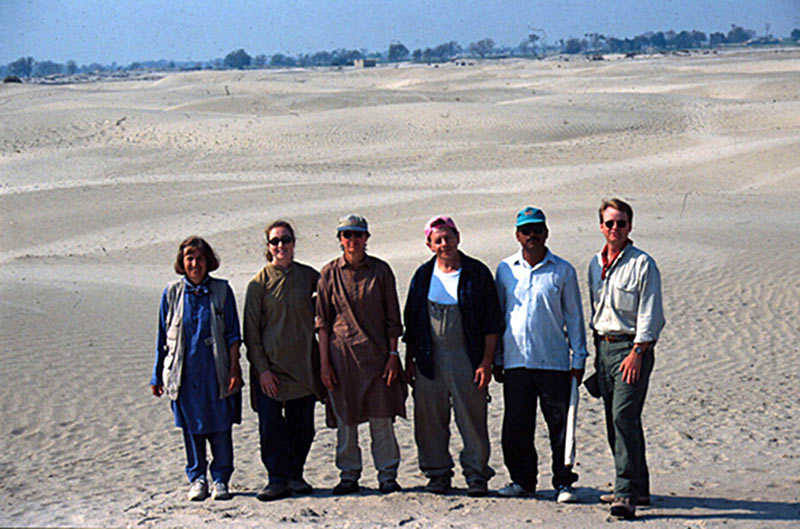
Above: Rita Wright, Suanna Selby, Susan Malin-Boyce, Joseph Schuldenrein, M. Afzal Khan, Mark Smith.
The results of the survey have marked the transition from a natural to humanly engineered regional landscape at the Beas settlements. The alignment of the pre-urban and urban sites along the ancient river bed, coupled with the evidence of a continuous vertical floodplain sequence, records the passage from natural to cultural sedimentation (at Lohoma Lal Tibba and Chak 90-12L), a slightly earlier transition at Vainiwal and longer-lived settlement (Late Harappan) than at Lohoma Lal Tibba and Chak 90-12L. Some Indus scholars refer to the homogeneity of Indus material culture, specifically the weights, seals and script, as Indus “veneer.” While we did find evidence for seal impressions and script at some Beas sites, our evidence demonstrates the everyday practices and production technologies were a primary link between the people at rural settlements and their counterparts at the larger center of Harappa
